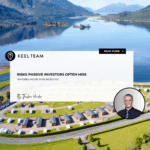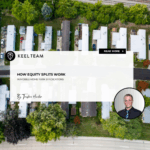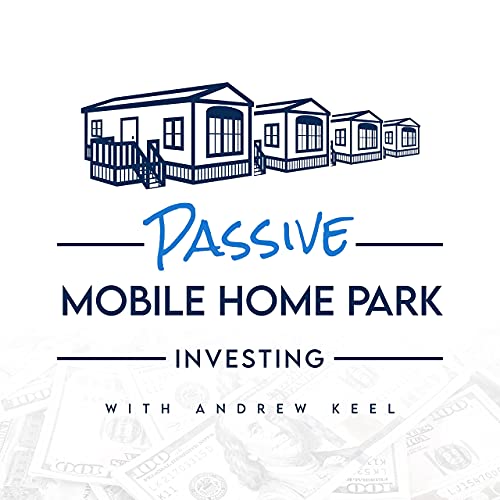Why the Demand for Mobile Home Park Living and Affordable Housing is Strong
-
 Andrew Keel
Andrew Keel
Listen on Apple Podcast here: https://podcasts.apple.com/us/podcast/why-the-demand-for-mobile-home-park-living-and/id1520681893?i=1000480443678
SHOW NOTES
Welcome to Episode 3 of the Passive Mobile Home Park Investing podcast, this episode will discuss why the demand for mobile home park living and affordable housing in general is off the charts in the United States. When supply is being reduced and demand is strong, opportunity comes knocking. I will discuss in this episode why passive investors should look to invest in mobile home parks based off of the fact that there is very strong demand for this type of affordable housing.
Would you like the pre-investment checklist that I use to review mobile home park deals before I invest in them? We are offering this as a free gift if you go to iTunes and leave a five-star review. To get the pre-investment checklist, leave us a five-star review on iTunes and then send us an email at PassiveMHPinvesting@gmail.com. In the email, please tell us who you are and what screen name you used to leave that review and we’ll send the pre-investment checklist, directly to your inbox.
Talking Points:
00:19 – Hello and Welcome
00:35 – Reason #3 Demand is very strong
00:45 – When I began my investing career
02:59 – Statistics on the housing crisis
07:08 – A few optimistic statistics and numbers for the future
07:50 – The Silver Tsunami
09:45 – Conclusion and teaser for the next episode
10:09 – Pre-investment checklist
SUBSCRIBE TO PASSIVE MOBILE HOME PARK INVESTING PODCAST YOUTUBE CHANNEL https://www.youtube.com/channel/UCy9uI3KGQmFgABsr9lUtRTQ
Links & Mentions from This Episode:
Keel Team’s Official Website: https://www.keelteam.com/
Andrew Keel’s Official Website: https://www.andrewkeel.com/
Andrew Keel LinkedIn: https://www.linkedin.com/in/andrewkeel
Andrew Keel Facebook Page: https://www.facebook.com/PassiveMHPin…
Andrew Keel Instagram Page: https://www.instagram.com/passivemhpi…
Twitter: @MHPinvestors
TRANSCRIPT
Welcome to The Passive Mobile Home Park Investing Podcast with your host Andrew Keel. This is the podcast where you can get the education you need to invest 100% passively in a highly profitable niche of mobile home parks.
Welcome to The Passive Mobile Home Park Investing Podcast. I’m your host, Andrew Keel. Today, we’re going to discuss the third reason why you should invest passively in mobile home parks.
Reason number three is because demand is very strong for mobile home park living due to an affordable housing crisis taking place in the United States. Back when I began my real estate career, I started as a single-family house flipper, sourcing off-market deals through various marketing techniques and buying houses as cash.
Through one of my yellow letter direct mail campaigns, I sourced the opportunity to purchase two mobile homes in Ocala, Florida. The best part is that both of these homes were only going to cost me $2200 cash. These were nice homes—vinyl sided, shingle-roof homes, manufactured in the mid-1990s. This was my absolute first exposure to manufactured housing as a whole.
I bought these mobile homes not knowing exactly how I was going to make a profit off of them. At that time, I just knew it was a motivated seller and a good buy. I got the titles, I went home, and I’ve got on YouTube—just like everybody does—to learn something new. I typed in ‘how to make money with mobile homes’ and I came across a guy named Lonnie Scruggs. He taught a method on YouTube on how to buy mobile homes, fix them up, and then sell them on contract to end buyers that will ultimately live in the homes.
I did exactly that. I followed Lonnie’s lead. I cleaned these two homes up really good, repainted them, and posted them online via Craiglist a few days after buying them.
What happened next is what really blew my socks off. I had over 25 people reach out to me to buy these homes within the first two days they were posted online. Think about that. Insane amount of people wanted to live in these mobile homes. Seeing this firsthand drew me in deeper and ultimately led to me owning over 1000 mobile home lots.
Demand for this product is absolutely off the charts. At the core, it comes down to an affordable housing crisis going on right here in the US. Check out some of these statistics. According to the US Department of Housing and Urban Development (HUD), over 50% of people approved for government housing assistance are turned away due to a lack of government funding available. According to the Bureau of Labor Statistics, over 50% of every job created in the United States since 2007 pays $10 per hour or less. Nearly half of American workers make less than $30,000 each year.
Also, approximately one in four employed renters spends 50% or more of their income on rent. According to the National Low Income Housing Coalition, as of 2019, the average two-bedroom rental amount is estimated at $1194 per month. A one-bedroom is estimated at $970 a month. And according to the US Department of Housing and Urban Development, housing is considered affordable when no more than 30% of a household’s gross income is spent on rent and utilities.
If we stepped back from that for just a second, a full-time worker will need to earn an hourly wage of $22.96 on average to afford a modest two-bedroom rental home in the US. This housing wage for a two-bedroom home is $15.71 per hour higher than the current 2020 federal minimum wage of $7.25 an hour. And it’s $5.39 an hour higher than the national average hourly wage of $17.57 an hour earned by renters.
In nine states and the District of Columbia, the two-bedroom housing wage is more than $25 per hour. The rent, affordable, according to HUD to a full-time minimum wage worker is $377 a month. Fortunately, the average mobile home park lot rent in the United States is around $300 a month, or many more people would be living in their cars or would be pushed to living on the streets.
Owning a home can be cheaper than renting, right? But the number of starter homes in the markets has decreased by 44% over the last five years. The average homebuyer now needs to spend 37% or more of their income on housing to afford a simple starter home.
The bottom third of the US population simply has no ability to afford the median home price of nearly $250,000 or the average three-bedroom apartment rent of around $2000 per month. If we touched on government-subsidized housing for a moment, the number of public subsidized housing units available is decreasing at a staggering rate.
According to an article written by housing expert and journalist, Jeff Andrews—this article was in January of 2020—stated that 27,000 units were removed from the system in 2018 alone. These units are being lost through demolition or otherwise primarily due to deferred maintenance and super low maintenance budgets. At the same time, only about 1000 new units were added to the system.
On a positive note, HUD has announced that housing vouchers are a less expensive solution versus government-managed housing facilities. On another positive note for manufactured housing, in July 2016, welfare recipients can now use their government-issued rent vouchers to buy mobile homes. Under the 2016 bill, public welfare recipients will be able to use the vouchers to pay mortgage, property taxes, and insurance on mobile homes, furthermore increasing the demand for communities to put these homes in.
In addition to all of that, there is the infamous silver tsunami getting started. Have you heard about that yet? This hits home for me. My parents are unfortunately in this category after their retirement savings took an absolute beating in the great recession. About 10,000 baby boomers are turning 65 and retiring each and every day. This is expected to continue through year 2030.
Shockingly, studies say that 6 out of 10 baby boomers have $10,000 or less saved for retirement. One in three have nothing saved. The average boomer is $99,000 in debt. This is all according to an article written by the working school on the baby boomer generation.
There’s an affordable housing crisis that is not going away anytime soon. The effects of the great recession are still around and affecting a lot of people today. This is why mobile home park living is ultimately attractive to so many. For around $300 a month, a family can have a roof over their heads with a built-in community. Of course, it’s not most people’s first choice but it remains a critical part of the American housing market for millions of low-wage workers.
To add to that, demand is so strong that most mobile home parks have little to no marketing. That’s right. In a world where websites are the norm for any business, most mobile home parks right now have little for any online presence. They usually don’t need (to be honest) to remain fully occupied due to several reasons. This speaks volumes for the service mobile home parks have to offer.
In conclusion, income levels have just kept up with rising rent and housing costs. Therefore, America’s most affordable form of housing—mobile home parks—are in very high demand.
That’s it for this episode. Make sure to check out our next episode on the low tenant turnover rates found in mobile home parks. Thank you all so much for tuning in.
Are you interested in diving deeper into mobile home park investing? Would a community of passive investors, experienced operators, and beginners be helpful to you? If so, check out the Mobile Home Park Mastermind Facebook group. It can be found at facebook.com/groups/mhpmastermind. This group is updated daily with new content and has over 1000 current members. This is a great resource for you to get all of your questions answered in one place. Once again, check it out and request to join at facebook.com/groups/mhpmastermind. See you there.
Andrew Keel
View The Previous or Next Post




